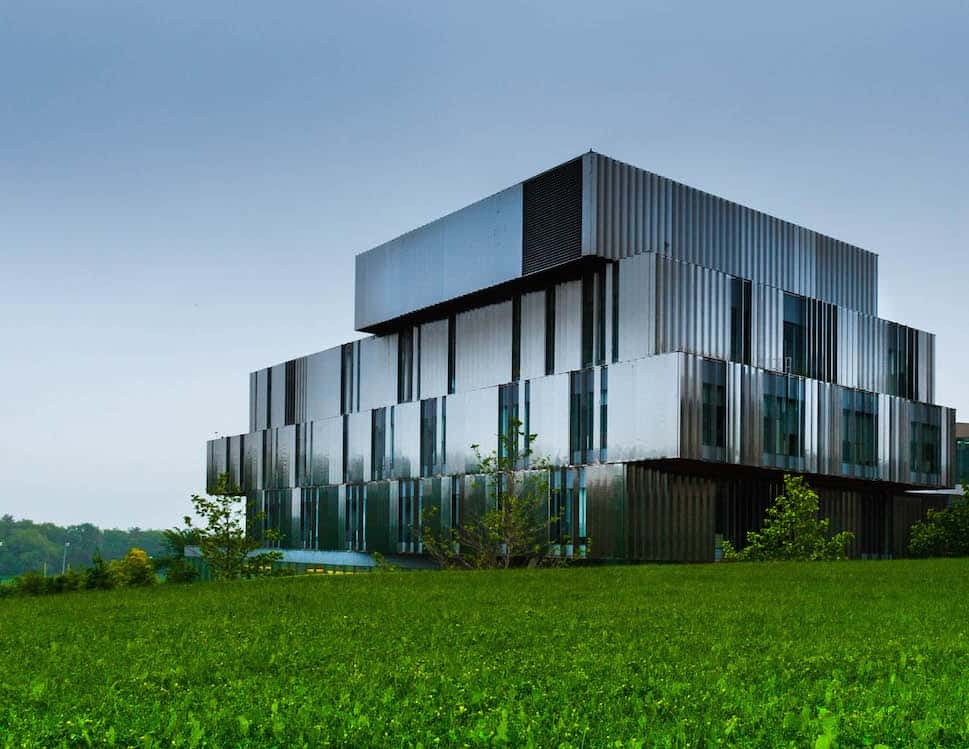“Excellent, to be honest…it was a great 4 years,” said Dr. Melanie Bechard when asked about her experience in UTM’s Academy of Medicine program. Melanie is a member of the Mississauga Academy of Medicine’s (MAM) first cohort, and recently departed the university with 51 fellow graduates on June 2.
Program foundation
The MAM program was launched in 2011, the result of a partnership with the Faculty of Medicine at U of T, UTM, and Trillium Health Partners, one of Canada’s largest leading academically affiliated health centers. The program was established as one of four academies within the larger framework of the Faculty of Medicine at U of along with the Fitzgerald Academy, Peters-Boyd Academy, and Wightman Berris. The Mississauga Academy is located on the UTM Campus, and educates over 200 aspiring medical practitioners.
The academy’s establishment was a part of a larger government led, province-wide initiative to fund facilities and medical research institutions outside of urban centers and incorporate them into smaller communities.
In the past, doctors in Ontario were disproportionately concentrated in dense urban areas, while the larger, sparser, geographical regions lacked in qualified medical practitioners. By establishing campuses in these communities, the belief was that newly graduated students would opt to stay in the underserved regions and work there — benefiting both the student with practical experience and exposure, as well as the health needs of the citizens in the surrounding communities.
Other examples of community-focused regional medical schools include McMaster’s Waterloo and Niagara campuses, as well as the University of Northern Ontario.
How it works
Courses are taught at both the UTM and St. George campuses by teleconference. Students from both campuses are able to access the same resources, work-placement opportunities, and labs to ensure they are well prepared for the next step of their medical training.
However, as MAM director Dr. Pamela Coates explains, the program at Mississauga has one fundamental difference — it uses a “hybrid community model”. This hybrid model employs the aforementioned resources, but in a smaller class setting with a focus on the surrounding community.
“[The model] allowed us to have more one-on-one time with our preceptors and supervisors [in hospitals], so we made some really valuable connections,” said Dr. Bechard.
Unique opportunities
According to Coates, in such a small program with even smaller class sizes, MAM students have ample opportunities to network with academics and practitioners alike. “This was definitely the strength of the program,” commented Coates. A “students developed really close connections with not only their professors, but also their fellow classmates,” Coates added.
Being the first ever cohort to go through a new program, these students were able to take leadership roles and help guide the community. As a result, students like Bechard had the opportunity to put their knowledge to the test by setting up community initiatives that would benefit the public while also broadening her own skill set.
Coates said that the most satisfying part of the program was seeing such initiatives develop and be implemented: “The best part was knowing that they were going to go forward to truly great opportunities…I believe they are equally as — if not more so — qualified than the other academy’s post-grad peers, and are really well equipped to go forward into what ever masters programs they wish,” stated Coates. “It was bittersweet watching this class graduate…the entire administration was very proud and excited.”
Bechard echoes Coates’ sentiments, stating that the education and opportunities she received were on par with the other U of T academies. “The thought did cross my mind that we may not have the same access as our peers based in the downtown campus, but these were largely unfounded,” said Bechard. “Though accessing research opportunities and work experiences did require some additional effort, we were able to participate in professional and extra-curricular activities both downtown and in Mississauga.”
Program reception and feedback
Bechard said that when issues or concerns with the program arose, the administration was very receptive to the students’ thoughts and requests. “They were contacting us every semester, asking us to provide feedback and other thoughts on the program. It was really nice to know that the administration valued our input, and made changes where they could,” she explained.
When asked how the program could be improved, Coates stated that the administration should continue to reach out to the students and faculty, assess their experiences, and respond accordingly. She also mentioned the importance of the hybrid model, and suggested they continue to try and capitalize on the unique way the program is run.


